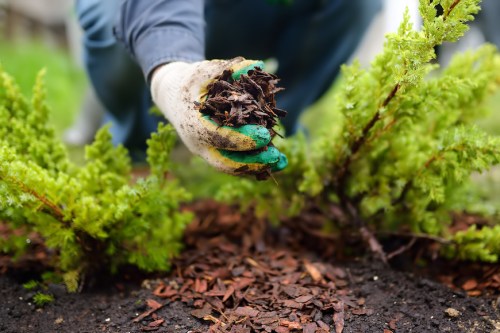Our editors independently select these products. Making a purchase through our links may earn Well+Good a commission
While gardening can improve your mental health, it can also open you up to a series of struggles: getting the right soil, prepping the Earth for planting seeds, and weeding, to name just a few. But if you do lasagna gardening layers, you might actually save yourself some of these gardening-related headaches, and make a small sustainability win.
Experts in This Article
horticulturalist for Earth’s Ally.
Before we get any further, though, put down the ricotta; a lasagna garden has nothing to do with growing Garfield’s favorite food. Rather, lasagna gardening is a no-till, organic gardening method discovered by Patricia Lanza about 20 years ago, which she outlines in her book Lasagna Gardening: A New Layering System for Bountiful Gardens, No Digging, No Tilling, No Weeding, No Kidding. You essentially use yard waste, kitchen scraps, and other items that would normally go into your recycling bin to prep the ground for planting. It’s done way in advance—six months to maybe even a year—but it saves you a lot of work down the line.
“Lasagna gardening improves the soil, providing a suitable environment for beneficial microorganisms,” says Angelo Randaci, horticulture expert and Earth’s Ally master gardener. “It’s a very low-maintenance gardening method with no need to mix compost. It also keeps weeds at bay without need of hand pulling or chemicals.”
And just like its namesake Italian dish is layered with pasta, sauce, cheese, and meat, lasagna gardening is made with layered organic materials that will “cook down” over time. It’s inclusive of nitrogen layers such as coffee grounds, veggie scraps, and grass clippings. Then there’s carbon layer materials such as sawdust, wood chips, mulch, dried leaves, newspapers, or cardboard.
“The layers hold nutrients throughout the season as the materials break down,” Randaci says. “My favorite combination of nitrogen and carbon is to start with cardboard—if cut into pieces, it will decompose sooner—shredded leaves mixed with grass clippings and vegetable waste. I avoid using newspaper with colored print because of the chemicals in the ink. I don’t use cardboard or newspapers after the first layer.”
While you can begin a lasagna garden at any point, Randaci suggests that it’s an especially good project for the fall. This will give enough time for decomposition to occur, since the the bed will need to sit until the layers break down.
Here’s how to use the lasagna gardening layering technique in your garden
You can plant the same way you would any other garden, and just repeat the lasagna gardening layering process ahead of each new growing season Here’s how to set up that initial garden.
1. Put down a thick layer of cardboard or newspaper
You’re setting up a foundation for your first layer, which is a carbon or brown layer. “This will choke out weeds while adding organic material to your soil,” says Randaci. “Add water to this layer. Adding water will help the cardboard stay in place and promote decomposition.”
2. Make a second nitrogen green layer overtop
Use materials like straw, grass clippings, leaves, and so on. Randaci advises that you make this layer about three inches thick.
3. Add four to six inches of brown (carbon) materials
“If cardboard or newspaper, small or shredded pieces will accelerate the decomposition process,” Randaci says.
4. Follow up with another layer of green material, followed by brown material
“You can cover the bed with plastic for a few days, to protect it from wind while adding heat to ‘cook’ the bed,” says Randaci.
5. Let the bed sit until layers have broken down
Again, this can take several months, so feel free to keep checking in on the status.”When the soil is loose and crumbles in your hand, you are ready to plant,” says Randaci. “Plant the same way you would any other garden. You’ll need to repeat the process each season.” His last pro tip is to pick a non-toxic garden spray, like the ones from Earth’s Ally, for pest control while your crops are coming in because the formulas are non-systemic, so they’re not changing your soil or your plants. And after all the effort you’ve put into this eco-conscious endeavor, the last thing you want is to undo all your hard work by spraying a bunch of chemicals all over you garden bed.
Oh hi! You look like someone who loves free workouts, discounts for cult-fave wellness brands, and exclusive Well+Good content. Sign up for Well+, our online community of wellness insiders, and unlock your rewards instantly.
Sign Up for Our Daily Newsletter
Get all the latest in wellness, trends, food, fitness, beauty, and more delivered right to your inbox.
Got it, you've been added to our email list.










